
We all want to have purrfect relationships with our paw-some pals. After all, living harmoniously with your feline family member means endless cuddles and snuggles, purrs on tap, and playtime whenever you want … or does it?
As much as you want your fur buddy to enjoy your company and relish your contact during every waking hour, it’s likely that this won’t be the case. Sometimes, it might seem like your contrary kitty flips from happily accepting a fuss to reprimanding you with a scratch or bite in just a split second.
However, if you understand your cat’s body language, you might be able to spot their mood changing before it’s too late!
How Do You Know if Your Cat Is Annoyed or Irritated?
If your cat is annoyed or irritated and wants some space, they’ll probably give you a few clues. So, what cat behavior should you look for as a sign to back off?
1. They Swish Their Tail

Though tail wagging in dogs is usually a sign the dog is happy, tail swishing in cats is often a sign that the cat is not pleased.
You might notice your cat’s tail moving more frantically if they are annoyed. They might even thump it repeatedly on the floor. Unlike dogs, a waggy tail isn’t always a happy sign in cats. It tends to mean that they are either feeling very playful or they’re annoyed. Either way, if you don’t want to get a few war wounds, it’s best to steer clear!
2. Their Ears Are Back

The farther back a cat’s ears, the more irritated—or even angry—the cat is.
Have you ever noticed that when your cat is contented and curious, their ears are often tilted forward? Well, the opposite is also true. When they are feeling threatened, angry, or irritated, your cat’s ears might be back, sometimes almost flat to their head. It’s noticing body signals like this that will help you avoid an aggressive encounter!
Also Read: 10 Causes Of Aggression In Cats And How To Help
3. They’re Hunched Up

If your cat is displaying a hunched and tense body posture, they might want to be left alone.
A relaxed cat is often sprawled out, their body long and their limbs stretched. If your cat is hunched up, with their neck short and legs tucked in, it probably means they’re feeling scared, annoyed, unwell, or antisocial. Of course, happy cats sit in a “loaf” position with their limbs under them. However, if this is the case, their neck should be elongated, and they shouldn’t look tense.
4. Their Pupils Are Dilated
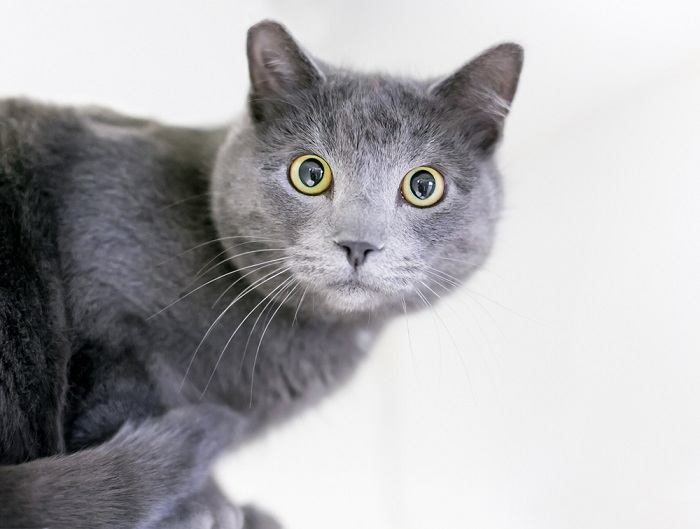
A relaxed cat’s pupils will look like narrow, black slits rather than wide, black circles.
If your cat’s eyes are like saucers or resemble big black holes, it could mean they feel wound up, threatened, or angry. Therefore, giving them some space is best as it could be a sign that they’re about to lash out. It’s true, though, that cats who are playing or play-fighting can also have dilated pupils, especially if they’ve been around catnip!
5. They Move Away and Hide
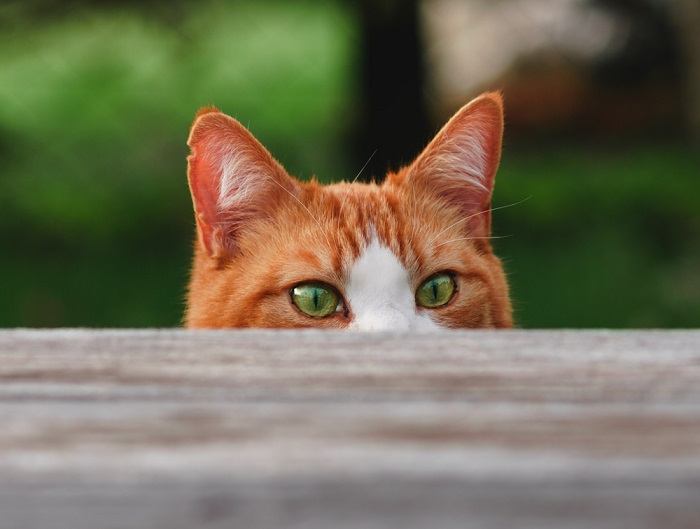
Most cats try to move away from people or things that are making them uncomfortable.
If a cat is uncomfortable with a situation, they’ll do their best to escape it. This means that if your cat or kitten is annoyed, irritated, or wants to be left alone, they’ll let you know.
Also Read: 5 Visual Signs Of A Stressed Cat And How To Help
If your cat walks or runs away from you or struggles to get free when you’re trying to cuddle them, they’re letting you know they’re not happy. If they do run off or hide, it’s best not to follow them. If you give them space, they will likely approach you again once they feel better.
6. They’re Not Interested in Treats and Toys

If your cat turns up their nose at toys or treats, leave them alone for a bit and see if they are interested later.
If you’re angry as a human, you’re probably not going to want to play games with your friends until you calm down. Similarly, being annoyed, irritated, or stressed might put you off your food. On the other hand, some people are emotional eaters, so they might be more likely to eat when angry or anxious.
If your cat is feeling irritated, though, it’s unlikely they’ll want to engage with you for playtime or treats. So, if your cat would typically jump at the chance for a treat and can’t be tempted, it might mean they’re feeling distressed.
7. They Hiss

Hissing is one of the clearest signs a cat can give to “stay away!”
Most cats don’t hiss straight away when they’re angry. They try more subtle communication first. However, if you’ve ignored their warnings and refuse to give them their space, your cat might feel they have no choice but to chastise you with a hiss or a growl. This leads to the next point …
8. They Growl
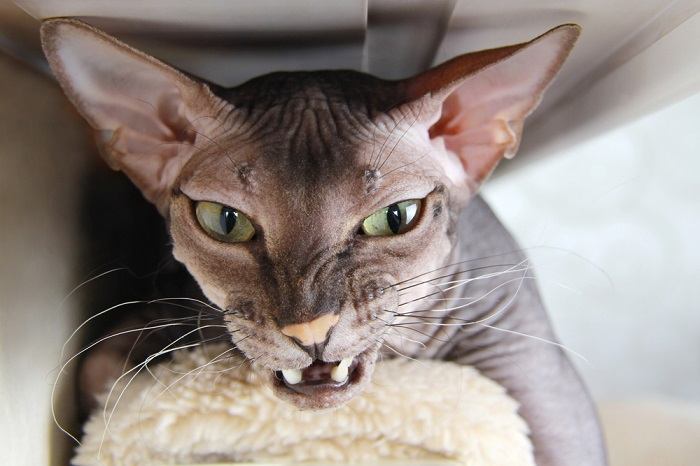
If hissing isn’t enough to keep someone away, cats may ramp up the communication with growling.
Another last resort for many cats is growling and other vocalizations like meowing. If you haven’t acknowledged the signs that they are irritated, and you persevere trying to give them attention when they really want to be left alone, you might hear them growl. If you do hear them growl, make no mistake, they want you to back off!
Also Read: 8 Ways To Help a Scared and Fearful Cat Be Confident
9. They Swipe at You
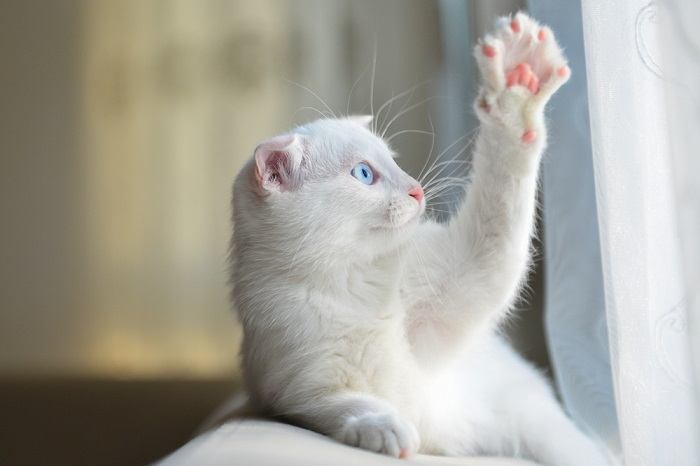
Cats may use their claws to get the point across if you don’t pick up on their signals they want to be left alone.
Some people think cats scratch and bite people for no reason, out of the blue. If you understand and listen to their body language, it’s rare for a cat to lash out and cause injury. On the other hand, if they feel trapped because their communication efforts are falling on deaf ears, you might be on the receiving end of a paw swipe.
10. They Bite
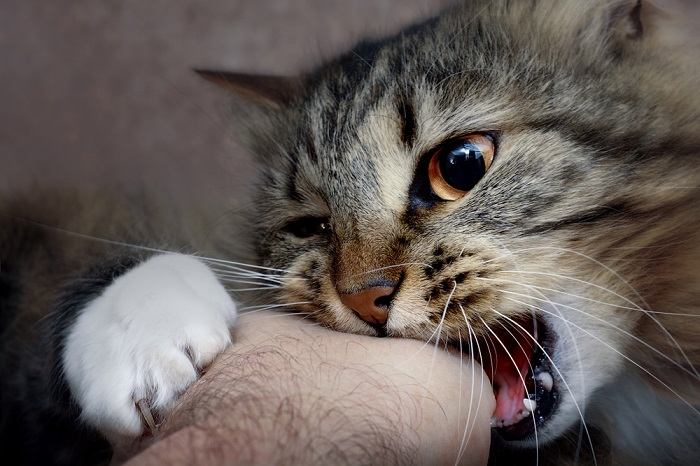
Biting is usually the last resort for cats that need a break.
In some ways, this is the ultimate way for a cat to show they are annoyed or irritated. However, if you watch them closely for signals about their mood, they shouldn’t feel the need to bite. If they are in pain, stressed, or afraid, and you don’t seem to be getting the message, they might feel they have no option but to give you a nip.
Also Read: Stress In Cats: Causes, Symptoms, & Treatment
Conclusion
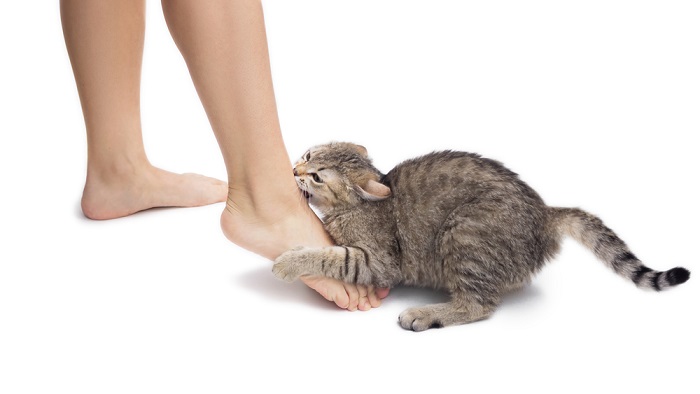
Many non-cat owners believe cats can be nasty and unpredictable, dishing out scratches and bites without prior warning. However, lashing out is usually a last resort, even when your cat is annoyed or irritated.
Thankfully, if you learn how to read their body language and pick up on their cues, you should be able to avoid any nasty surprises! On the other hand, if your cat’s behavior has changed and you think they might be unwell, you should take them to a vet for a checkup in case there is a medical cause.
Also Read: Top 7 Signs Your Cat Loves You
Frequently Asked Questions
What does an annoyed cat look like?
Annoyed cats often have a hunched, tucked-up posture, dilated pupils, and swishing tails. They might also have their ears held back, and they might growl or hiss. Of course, the signs will start subtle and mild, but they will ramp up if the message isn't getting through!
What does a cat do when it's annoyed?
When a cat is annoyed, many people think they will bite or scratch. In reality, physical violence is usually a last resort. Before they lash out with claws or teeth, cats will try to remove themselves from the situation by walking away or hiding. They might also move their tail excessively and growl or hiss to warn you off.
How do I say sorry to my cat?
It's best not to follow your cat around if they're angry or distressed. By moving away from you, they are showing that they want some alone time, and although that might feel hurtful, the best thing you can do to help is leave them alone.
If you try to make amends with cuddles or treats, they might feel cornered and could let you know that by becoming aggressive. Once your cat is feeling calmer, trust that they will approach you. By waiting calmly and quietly, you’re making them feel more at ease so that they are more likely to appear sooner rather than later.
How do you tell if a cat is stressed?
Stressed cats sometimes look like the angry cats described above. However, sometimes stressed cats don't seem outwardly stressed at all. In these cases, the only indication of stress might be strange changes in behavior like inappropriate urination, pooping outside the litter tray, cystitis, or overgrooming.



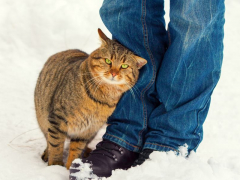




I have a “new” cat, Simba, who is aprox. 1 yr old male short-hair ginger. His previous owner never spent alot of time or attention on him & originally I was just cat sitting for a week while they moved. Well, after 2 weeks, they just never came back to get him, so here we are. Now, I am having an issue with his aggressive behavior towards my feet. He gets very moody at times and when I walk around the house, he does that loud cat scream at me, and comes charging at my feet. He has nipped me once already, and I am getting pissed, just about ready to beat his ass & throw him outside. Any1 have any suggestions on how to stop this behavior
Yikes, Carole, those were some neglectful owners—glad you were there to take in this cat. This type of behavior is more common among cats who were neglected and didn’t receive proper socialization as kittens. Trauma can also play a part. This behaviorist-written article goes into great detail on the causes of aggressive behavior in cats and what you can do to help, so I’d recommend having a read. Hope you can sort this out.